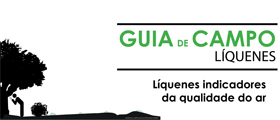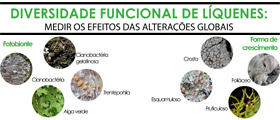 |
Concostrina-Zubiri L, Granzow-de la Cerda I (2015) Confirmed presence of Gigaspermum repens (Hook.) Lindb. in the New World. Journal of Bryology 37:147-149.
+info
Concostrina-Zubiri L, Huber-Sannwald E, Martinez I, Flores J, Reyes-Aguero J, Escudero A, Belnap J (2014) Biological soil crusts across disturbance-recovery scenarios: effect of grazing regime on community dynamics. Ecological Applications 24:1863-1877
+info
Concostrina-Zubiri L, Martinez I, Rabasa S, Escudero A (2014) The influence of environmental factors on biological soil crust: from a community perspective to a species level approach. Journal of Vegetation Science 25:503-513.
+info
Concostrina-Zubiri L, Pescador D, Martinez I, Escudero A (2014c) Climate and small scale factors determine functional diversity shifts of biological soil crusts in Iberian drylands. Biodiversity and Conservation 23:1757-1770.
+info |
About the project
BioCrusts is a FP7-PEOPLE-2013-IEF - Marie-Curie Action awarded to Laura Concostrina
BCSES: “Functional diversity of Biocrusts: towards ecosystem services quantification in drylands
Detailed and standardized protocols have been developed to identify and measure plant functional traits, allowing worldwide scientists to address critical issues on ecosystem functioning and responses to global change. However, there is a necessity to complement the existing science on functional diversity about vascular plants with that of other soil organisms present in ecosystems where vascular vegetation is scarce. This is the case of drylands, where biological soil crusts or biocrusts formed by soil lichens, bryophytes, and other microbial organisms such as cyanobacteria, algae and fungi, may dominate plant interspaces.
Biocrusts have received increasing attention in dryland ecology during the last decade due to the key functional roles it performs by i) fixing carbon and nitrogen, ii) participating in nutrient cycling, iii) protecting soil surface from erosion forces, and contributing to soil formation and stability, and finally, vi) taking part in biotic interactions. Despite biocrusts have already been identified as a good model system to investigate the relation between species diversity and ecosystem functioning, quantitative measures of their functional diversity and their contribution to ecosystem services are lacking.
The goal of BCSES is to characterize biocrusts functional diversity in drylands worldwide (Portugal, Italy, USA, Spain, Australia, China) and gain knowledge about how they affect ecosystem processes. Then, we will have a more precise measure of the ecosystem functions they perform, and consequently of the ecosystem services they provide.
BCSES merge the most recent advances in the functional diversity arena with the knowledge of biocrusts functional traits, enlarging the range of ecological applications attributed to these organisms: i) they have been mostly utilized as bioindicators of environmental impacts (e.g., atmospheric pollution, climate change), and ii) the previous research has mostly focused on epiphytic in forests, rather than terricolous lichens and mosses in drylands.
Functional diversity of biocrusts constitutes a powerful tool for ecosystem services quantification in drylands, with a large set of multidisciplinary applications to be explored.
+info |

.jpg)
.jpg)
.jpg)
.jpg)
.jpg)
.jpg)
.jpg)

.jpg)
.jpg)
.jpg)
.jpg)
.jpg)
.jpg)
.jpg)


